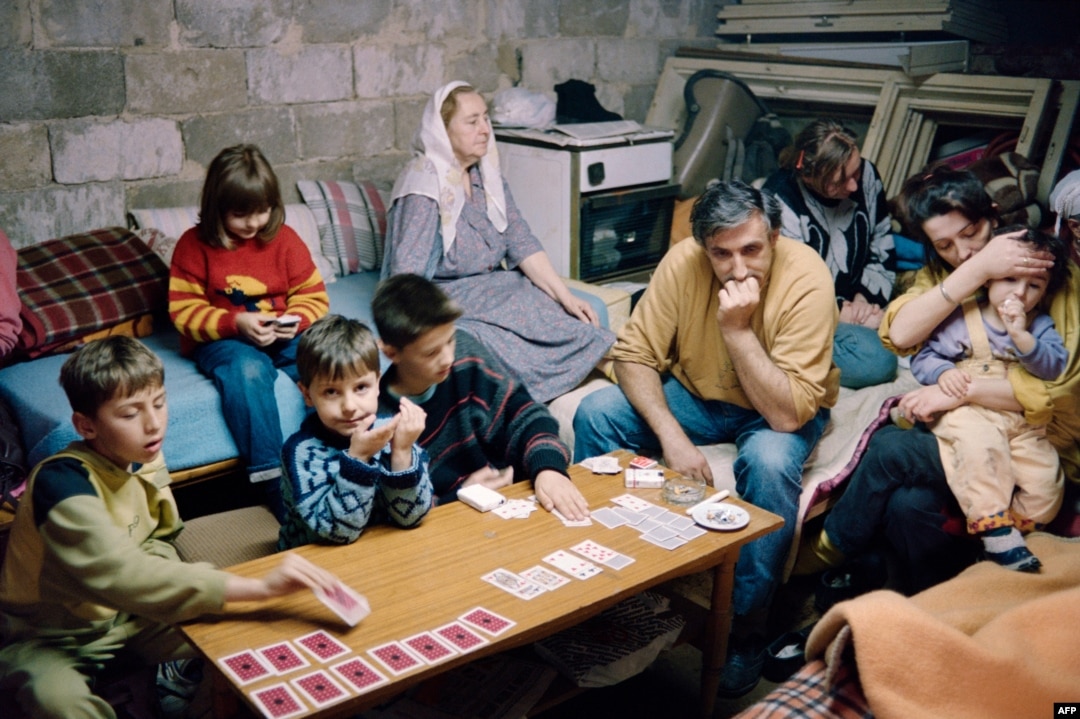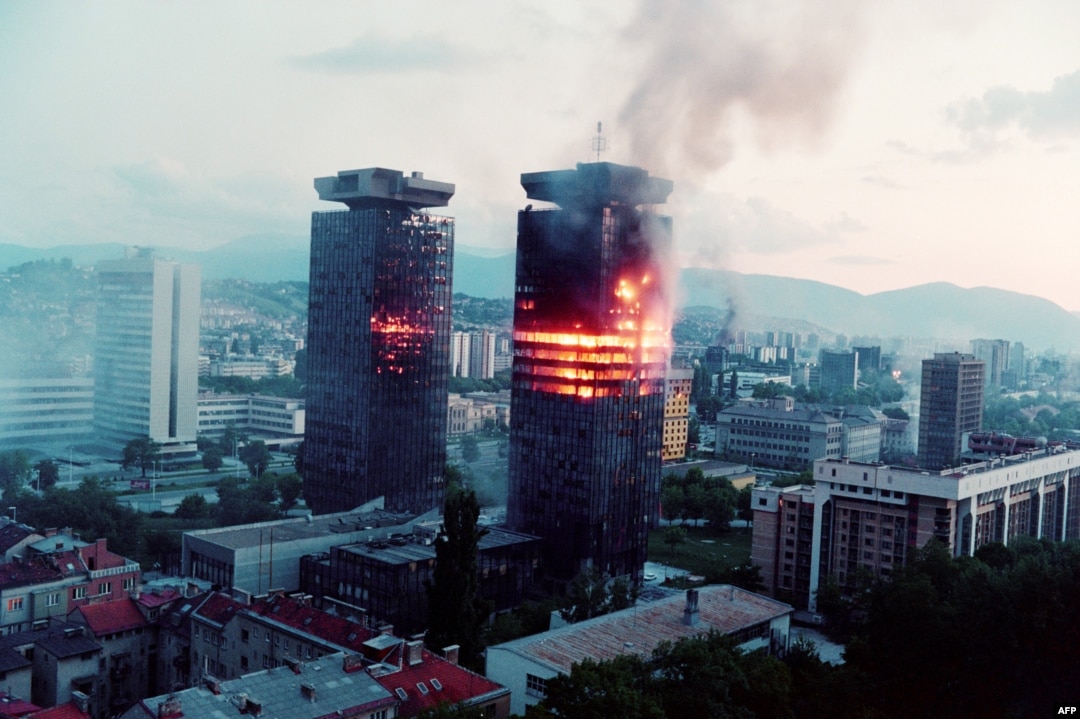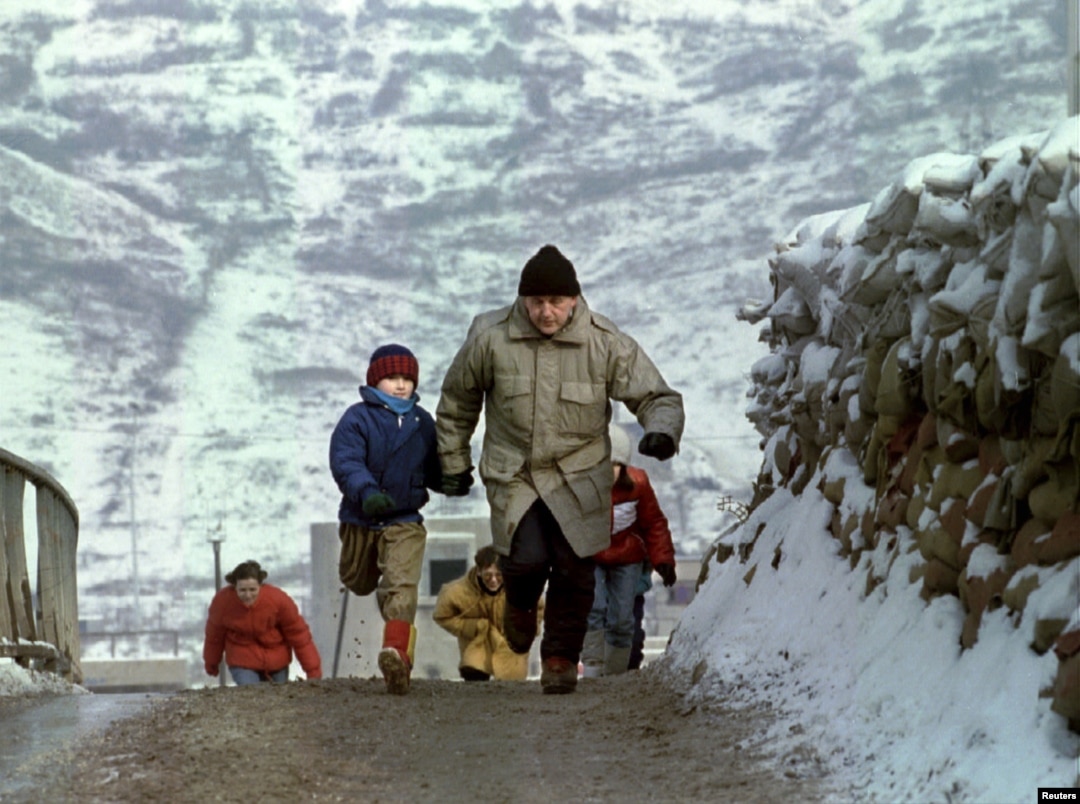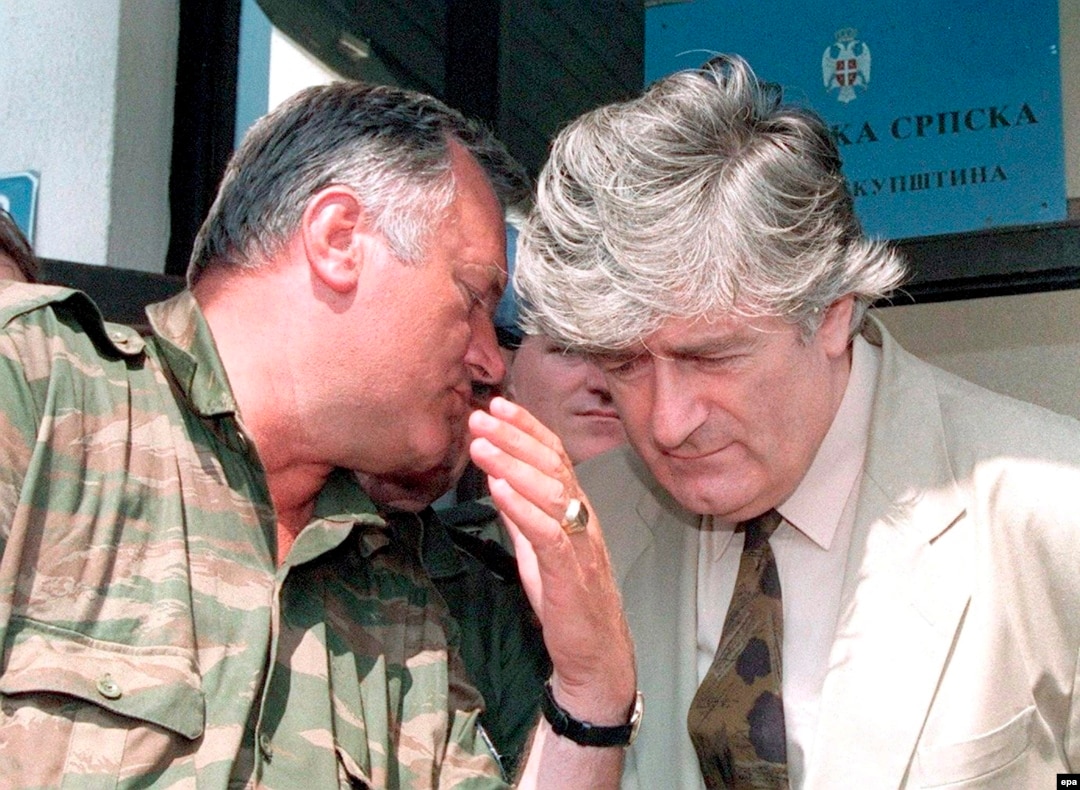The Bosnian War: From Death And Destruction To Dayton

A family takes shelter in a cellar in Sarajevo on June 6, 1992, as shells fall on the Bosnian capital. The fighting continued, despite a UN-brokered deal to reopen the airport and for Serbian troops to withdraw from their barracks in the center of the city.

The UNIS twin towers burn along 'Sniper Alley' in downtown Sarajevo as heavy shelling and fighting raged in the Bosnian capital on June 08, 1992. Nicknamed 'Momo' and 'Uzeir' after a popular ethnic Bosniak and Serb comedy duo, the structures were heavily damaged during the siege of Sarajevo but remained standing to became a symbol of the city's resilience.

In an attempt to dodge snipers, a father and son sprint across a sandbagged bridge in the Olympic village area of Dobrinja, on January 4, 1993.

Bosnian Serb Commander Ratko Mladic speaks to Bosnian Serb leader Radovan Karadzic during a meeting in Pale, Bosnia and Herzegovina, on August 5, 1993. Both men are currently in custody and on trial for war crimes at the International Criminal Tribunal in The Hague.
Bosnian Muslim refugees are packed into a UNHCR truck on March 31, 1993, during the evacuation of the besieged town of Srebrenica. An enclave in the east of the town was designated a U.N. safe haven, but four months later, in July, more than 8,000 Muslim men and boys would be slaughtered in Europe's worst massacre since World War II.
Dutch peacekeeping soldiers talk with Bosnian Muslim fighters in Vares, on March 1, 1994.
With fuel in short supply, Bosnian army soldiers are forced to use a horse and cart to transport food supplies to the district of New Sarajevo near the airport on January 5, 1995.
These people were the lucky ones. Around 10,000 refugees from Srebrenica board buses at a camp outside the UN base at Tuzla Airport on July 14, 1995. Just three days earlier, on July 11, Bosnian Serb forces started slaughtering 8,000 Muslim men and boys in an eastern enclave of the town, dumping their bodies into pits in the surrounding forests.
The stench of death. An ethnic Croatian man holds his nose as he helps collect the decomposing bodies of 15 people left to rot in a meadow in northwest Bosnia, on October 16, 1995. Numerous mass grave sites were discovered in the wake of the Serb retreat from northwest Bosnia.
Delegates pose before the Balkan peace talks, on October 31, 1995, near Dayton, Ohio. From left to right: Richard Holbrooke, U.S. Assistant Secretary for European and Canadian Affairs; Franjo Tudjman, President of Croatia; Alija Izetbegovic, President of Bosnia-Herzegovina; Warren Christopher, U.S. Secretary of State; Slobodan Milosevic, President of Serbia.
Leaders sign their initials on the draft of the Dayton peace agreement on November 21, 1995, at the conclusion of the Proximity Peace Talks at the Wright Patterson Air Force Base near Dayton, Ohio. Serbian President Slobodan Milosevic is sitting second from the left. To his left are Bosnian President Alija Izetbegovic, Croatian President Franjo Tudjman and U.S. Secretary of State Warren Christopher.
Young Bosnian Serbs celebrate the Dayton peace agreement in the north Bosnian town of Banja Luka on November 21, 1995.
A Bosnian Serb woman sits in her empty house as she prepares to leave the northern Bosnian town of Odzak on December 11, 1995. She was among 19,000 Bosnian Serbs that were relocated as the town came under Bosnian government control under the Dayton peace agreement.
A convoy from the First U.S. Army carries boats and pontoons to Slavonski Brod on December 13, 1995. As part of the Dayton peace agreement they will construct a bridge across the Sava River that will link Bosnia and Croatia.
Melica Saric, a Bosnian Serb mother, mourns at the grave site of her son Velimir on December 24, 1995, in Sarajevo. He was killed near the end of the war in October near the front line of Sarajevo's Serb-held suburbs.

